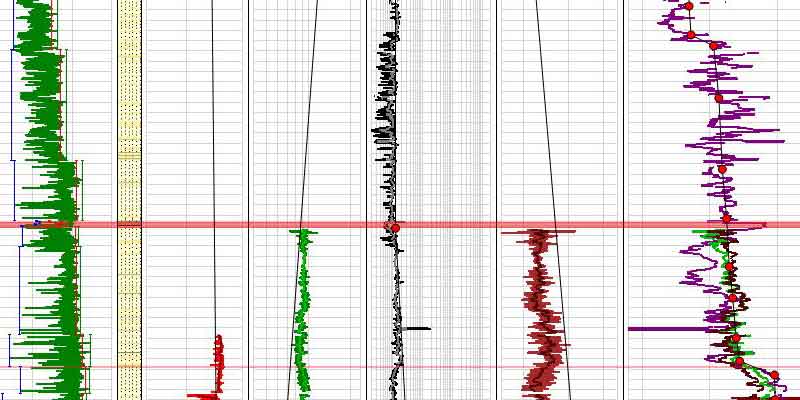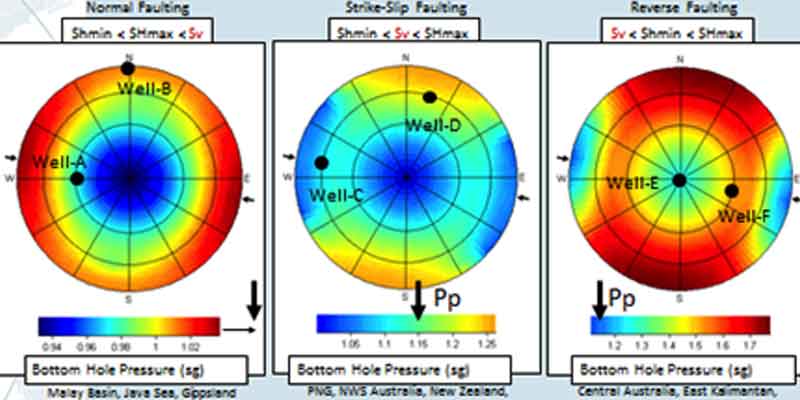Category Archives: Geomechanics
Benefits of 3D Geomechanics Models

Good drilling practices alone won’t save wells experiencing collapse issues, but creating accurate Geomechanics models, and continuously upgrading those models, will.
Regardless of where in the world a client’s drilling operations are, it is critical to design a drilling program that matches the rock. That’s seems pretty simple, but the truth of it is, it is not uncommon for some operators to plan their drill sites solely off of topography, and not off of downhole rock mechanics. That is not an indictment of the drilling team – in many cases, they get handed the location and are forced to begin planning wells before the geomechanics studies are even complete, and by the time they are, they are so far down the road with AFE’s and site plans and even roads, they really can’t back out and move the pad two miles in the opposite direction. They are forced to drill at whatever angle and azimuth will hit the target.
Here We Go Again, Folks!

Since the last issue of ERD Magazine, our friends at OPEC have started making some very subtle noises that they may be just about done trying to bankrupt themselves (and everyone else in the process…), and IF that is the case, it may be time for our clients to dust off all of those projects that have been on a shelf since the end of 2014, and take another look at them. I can’t speak for everyone in the Horizontal/ERD, wellbore stability/geomechanics or deepwater drilling fraternities, but I can say that many of us aren’t expecting too much for the remainder of the year; maybe Q4(?). If we do get back to drilling, who’s going to actually do it? We’ve laid off half of Houston, it seems, and I’m hearing Aberdeen isn’t much better off… I know I’ve had to lay off, folks – nothing for it, to be honest. Luckily, they were top-notch ERD hands, and were able to, unbelievably, find something IN THE INDUSTRY, when many others were cleaning out their desks and lockers. Can I get them back? I sure hope so; those are going to be some tough phone calls… Maybe we’re about to get back at it.
Horizontal Stress Modeling

Wellbore Stability and Horizontal Stresses
“I paid to send the entire crew to a 5-day ERD practices class, had an engineering study done, and put ERD hands on my rig — and I still got stuck!”
Maybe you have another problem, one that conventional ERD companies don’t address…
HXR Drilling Services’ Geomechanics Division provides solutions for wellbore stability uncertainties. Instability issues can be avoided by developing a geomechanical model based on data collected from regional offset wells using JewelSuite™, a 1D and 3D subsurface modeling platform. JewelSuite™ modular software platform is made up of PressCheck™ and WellCheck™, and is commonly used with another stress modeling program, call SFIB™. One essential function of the geomechanical model is to define stresses to avoid instability issues. This allows drilling personnel to develop a sound drill plan with the best mud weights, drill trajectory, and casing design.
HXR’s Geomechanics Division

Providing Solutions to Pore Pressure and Wellbore Stability Issues Encountered While Drilling
HXR Drilling Services Geomechanics Division can provide solutions to pore pressure and wellbore stability analysis uncertainties for stable wellbore trajectories and determination of optimal mud weights.
A calibrated regional area, using analogue wells, can provide sufficient data to study subsurface pore pressures and to analyze characteristics contributing to wellbore instability. After collecting data, a pore pressure 1-D model and a wellbore stability (WBS) model can be generated based on client goals and data availability.
A Stable Wellbore is a Successful Wellbore

How Geomechanics is Crucial to ERD Well Design
Prior to designing a drilling program for a target wellbore, it is imperative to understand the rock mechanics going on along the wellpath, as well as the target location. Subsurface interactions rely on indirect measurements, from multiple disciplines, to make interpretations about how forces, and their subsequent pressures and stresses, mechanically interact with the rock, fluids, and formations below the surface. That is critical, because if we don’t know how the rock is going to act when a certain mud type is introduced into it, or what the formation limits are in terms of mud weight or ECD, then we can’t perform a successful drillstring design or casing program.
The application of geomechanics software permits the user to investigate the location of a target well to better explain all forces and conditions the wellbore will encounter. Geomechanical studies generate a target well or a regional location’s history. This history holds information about the interactions between the various forces and materials in the earth and describes the basin characteristics that provide clues as to how the basin may have evolved and how the sediments were deposited and deformed.
(more…)
When it comes to Drilling Software, you can’t always get what you want…

Or can you?
This week, I’d like to talk about drilling software. There seems to be two schools of thought when it comes to designing, or even choosing, drilling engineering software. The first is to try to cobble as many different capabilities as possible into one big package; a “jack of all trades, master of none” mentality. The other is to focus on modularity – a specific team of programmers and software designers focus upon one specific element of drilling engineering that they are expert in, say Temperature Modeling, and build a module for that. Many of these modules share setup files, so that a well set up in one module can be transferred and used as a base file for another module – saves a lot of BHA reentering… I bet everyone reading this has an opinion, one way or the other, on which way to go is best; I also bet it is a strong opinion!
(more…)
All the Pump, All the Rotary, All the Time Is Not Always the Answer

Welcome to the first edition of HXR’s Newsletter! In the coming months, we’ll be addressing issues that we all encounter on our drilling projects, and we hope we can share some insights that may help improve operations. We’d appreciate your feedback, and if we can establish a dialogue between engineers and geoscience professionals then we’ve achieved our goal.
(more…)
